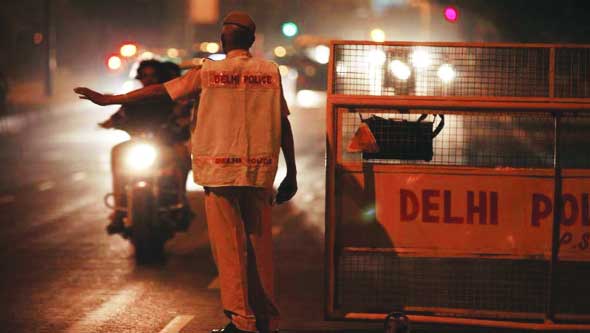The brazen increase in the number of incidents in Delhi means that the Government and police must work in tandem
The spate of snatchings and shootouts at busy neighbourhoods and during working hours has definitely alarmed Delhiites. It is not only the count which is climbing recently, as confirmed by Delhi Police data between January and May, but the brutality and violence quotient involved in each incident. Clearly, there is no fear of the law. While murders went up from 205 to 211, snatching cases shot up from 2,691 to 2,812 for the above-mentioned period. Of particular interest is the fact that snatchings and robberies had actually gone down over the last three years. With targets being dragged out of autorickshaws or beaten into submission, it shows that the perpetrators have become more determined and desperate enough to risk being seen on CCTV and get the job done with lightning efficiency. Policing in Delhi has always been a challenge what with the State Government having limited powers and Delhi Police coming under the Union Home Ministry. At the same time, it is because of its special status that Delhi Police is better equipped with resources for crime-fighting. So clearly the question arises why the sudden uncomfortable spikes on the graph? Of course, the nimbleness of snatching operations with alarming regularity points to the profile of a gang of young desperados, usually bike-borne, who go after mobile phones and jewellery that are easier to dispose of in a secondary market and encashable enough in the short-term. They are clearly technologically clued in as they can change the IMEI number of the cellphones in no time, an ability which makes them untraceable. It is believed snatchers use the quick money for drug use. Among the four metros, Delhi reports the highest incidence of thefts, though around 90 per cent of victims do not register an FIR. That’s because they feel an investigation is pointless considering theft as a crime is bailable. Currently, a case under Section 356 (assault or criminal force in attempt to commit theft of property) of the IPC is slapped against the accused with a maximum imprisonment for two years. It is because of this glaring loophole that neigbouring Haryana recently made snatching a non-bailable offence punishable up to 10 years in prison.
As for streetside shootouts, their daredevilry hints at an influx of professional gangs, who have of late taken refuge in the national capital region (NCR) as a hideaway. Some of these hardened criminals are easily getting bail in their home States, in the absence of local police monitoring important hearings or challenging their bail plea. The bustle of Delhi and its suburbs allows them a certain anonymity and enough work sheds that double up as factories of country-made pistols. It is because of these newer challenges that the Delhi Police decided to strengthen its vigilance arc at the beginning of this year itself. With GPS technology, faster patrols, drones, body cams, AI-assisted drills and a reactivated beat network, it has been able to improve its emergency responses and their efficacy. It is also working with real-time data, something which needs to extend countrywide. For a sense of perspective, the National Crime Records Bureau (NCRB) data was last updated in 2016 and cannot at any stretch be held as an indicator. Meanwhile, Delhi Chief Minister Arvind Kejriwal is doing his own bit to enhance security, having announced the installation of 2.10 lakh streetlights across the city’s dark spots to arrest snatching incidents. His ongoing CCTV camera project has taken off, too, with 2.8 lakh surveillance devices in residential and market areas as suggested by local MLAs and RWAs. While many may argue that such measures are no guarantee for the severity of crime committed, studies around the world have found that improved street lighting did have a positive effect in reducing crimes such as burglary and theft. And these are a matter of concern at the moment, most victims being women. If both the Kejriwal Government and Delhi Police can complement each other’s strengths, then we may at least learn not to live in denial of our underbelly.


























